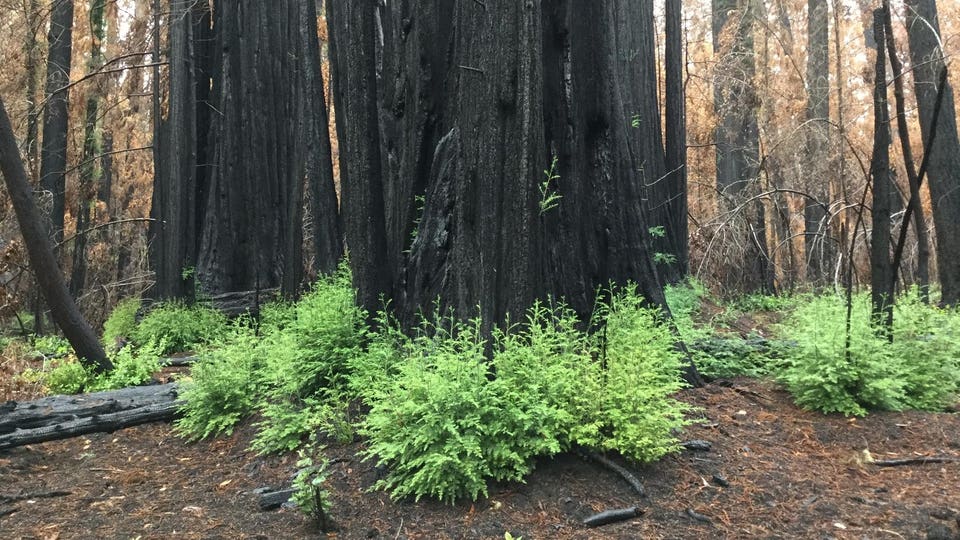A new sprout appears on the trunk of a California coast redwood charred by a catastrophic 2020 In a hopeful sign of nature’s resilience, ancient California coast redwoods charred by a catastrophic 2020 wildfire have grown new leaves. That redwoods can regenerate after a disturbance is well-known. These sprouts, however, grew from buds dormant under bark for centuries.
And the carbon reserves that fueled their regrowth are believed to be up to 100 years old, some of the oldest ever measured. “It is likely that other long-lived trees also harbor carbon reserves that are much older than previously recognized,” said , a Northern Arizona University physiological ecologist and lead author of a to sprout new life on their blackened roots, trunks and branches. The older carbon stores in the redwoods, trees that date back as far as 1,500 years, may provide some hope for other older foliage destroyed by disasters such as pest outbreaks, fires and hurricanes.
Peltier and team studied redwoods torched in the , which ignited in August 2020, tearing through large groves of majestic redwoods in Big Basin State Park, the oldest state park in California. The researchers’ findings on what enabled California redwoods to regenerate appears in the journal . In the well-understood natural process known as photosynthesis, plants and trees absorb carbon dioxide and water, which turn into sugar and other carbohydrates when exposed to sunlight, energizing new tissue growth.
In the case of the burned redwoods in Big Basin State Park, “carbon photosynthesized from the atmosphere more than 50 years ago is being used as energy to grow new leaves in 2021,” Peltier said in an interview. “This is a really long time for sugars to stick around. ” Carbon captured up to 100 years ago is fueling new signs of life at the base of blackened tree Peltier, along with North Arizona University biological sciences professor and other colleagues, visited Big Basin State Park six times during the winter, spring and early summer of 2021 to explore how long the redwood trees’ carbon reserves could be saved for future use.
It’s an increasingly relevant question, with and other climate-related disasters threatening natural landscapes with ever more frequency. “Trees can’t move, and climate warming makes all of these things like drought and fire worse,” Peltier said. Many redwoods and other trees at the park, such as Douglas firs, didn’t survive the CZU Lightning Complex fire, which started when a rare summer lightning storm sparked small blazes that got carried by strong, dry winds.
The fire burned a total of 86,509 acres in two Northern California counties. To enable the study, Melissa Enright, a research consultant with the U. S.
Forest Service, covered parts of 60 re-sprouting trees with black plastic bags to inhibit photosynthesis and ensure the tiny shoots were entirely powered by carbon reserves. The Northern Arizona University researchers then used radiocarbon dating to determine the age of that stored carbon. Redwoods have evolved to be exceptionally adapted to fire, with thick, shaggy bark that keeps out flames and protects the towering trees from heat.
Still, they’re not fireproof, and even the California coast redwoods showing signs of rebirth will likely never be the same. “Those redwood trees simply cannot recover those gigantic leafy canopies they had before fire for many years,” Peltier said. “So while redwoods survived, many things have also changed.
“.
From: forbes
URL: https://www.forbes.com/sites/lesliekatz/2023/12/06/redwood-trees-torched-in-wildfire-sprout-new-leaves-from-centuries-old-buds/
